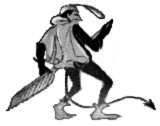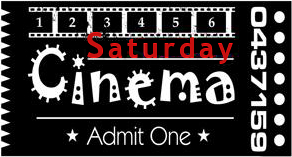Katherine Nabity's Blog, page 225
September 3, 2013
Review ~ Revelations of a Spirit Medium
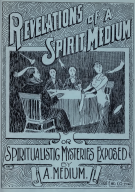
1922. Facsimile edition with notes, bibliography, glossary and index.
No mere knowledge of magical secrets will ever guarantee the reader from being deceived by fraudulent mediums. Actual acquaintance with practical methods and long experience of the conduct of seances is necessary before he will be able to distinguish the genuine from the fraudulent, and when he finds himself able to discern faintly the line which divides the two he will be in a position to understand more fully the enormous difficulties which confront the investigators of psychical phenomena. It is hoped that the reappearance of this mediumistic classic will whet the reader’s appetite and make him eager for still further information. (via Goodreads)
Originally published in 1891, Revelations of a Spirit Medium is an expose of seance techniques of that era by a former medium. It was first published anonymously, but by 1922 was attributed to Elijah Farrington.
Farrington writes candidly about his experiences as a medium; especially his slide into the profession and some of the more unbelievable frauds perpetrated by some of his fellow “mediums.” His tone is very caustic, sometimes off-puttingly so. While he ends the book with “the writer does not wish to be understood as maintaining that there is nothing in the Spiritual philosophy,” he points out repeatedly that he never encountered a medium that wasn’t in the profession only for the money. He has venomous derision for the “top-heavy investigators” who create overly complex explanations, mediums who do the job poorly (he is of the opinion that all female mediums are in this category), and sitter who fall for poorly wrought seances and tests.
From a research point of view, this is a pretty notable work. While David Abbott’s books and articles go into a lot of detail, Farrington writes as someone who was reliant on the techniques. Since he’s not worried about being technical, he writes in the slang of the time and the jargon of the profession. The story of how he came to be a medium was particularly interesting to me since it hasn’t been an aspect I’ve given thought to beyond vague explanations. I’m also impressed with the well-connected web of information archived by mediums. There is a level of effort and preparation behind these turn-of-the-20th-century seances that is admirable. Sadly, the book isn’t very well organized. Farrington meanders from one type of seance to another and back again. It’s going to be difficult to find again in the PDF the details I might want to reread.
The 1922 edition of the work also includes a glossary and a bibliography of related works (including Abbott’s) that would take me a good long while to go through, even if I could track them down.
Genre: Non-fiction
Why did I choose to read this book? Research
Did I finish this book? (If not, why?) Yes
Format: PDF of scanned book
Procurement: Open Library

Hosted by Joy of Joy’s Book Blog


September 1, 2013
What Else in August
Starting a new draft…yesterday. Same ol’, same ol’.
# of submissions for Luck for Hire: 4
# of responses: 2
# of submissions for Model Species: 2
# of responses: 0
Queries were tweaked.
Other Life Stuff
August was the doldrums of summer. Read some stuff. Wrote some stuff. Played too much MineCraft. Helped get fall league set up for VOTS.
Looking forward R.eaders I.mbibing P.eril. and fall league and college football and heading back to Nebraska for a real taste of autumn.
Books Obtained
The Final Confession of Mabel Stark by Robert Hough
Magic by William Goldman
Other Books I Want to Read
At Goodreads:
Murder as a Fine Art by David Morrell
The Supernatural? by Lionel A. Weatherly
The Psychic Mafia by Allen Spraggett
 The Turk: The Life and Times of the Famous Eighteenth-Century Chess-Playing Machine by Tom Standage
The Turk: The Life and Times of the Famous Eighteenth-Century Chess-Playing Machine by Tom StandageThe Secret Life of Houdini: The Making of America’s First Superhero by William Kalush
Bird by Bird: Some Instructions on Writing and Life by Anne Lamott
Sleights of Mind: What the Neuroscience of Magic Reveals about Our Everyday Deceptions by Stephen L. Macknik, Susana Martinez-Conde, & Sandra Blakeslee
At the Greater Phoenix Digital Library:
The Anatomist’s Apprentice by Tessa Harris


August 31, 2013
Saturday Cimema ~ Several Cinematic Houdinis
Earlier this week, a fellow Hugh Jackman fan linked to the following: Houdini Musical, Starring Hugh Jackman, May Have Chicago Premiere Prior to Broadway. My first thought was, “Dude, isn’t he a little tall to be Houdini?”
According to IMDB*, Harry Houdini was 5’6″. Wikipedia quotes 5’5″ and notes that his shortness was often remarked upon. Hugh Jackman is 6’2″. I’m guessing the milk can escape isn’t going to be in the musical. (Of course, this wouldn’t be the first time Jackman’s been called upon to “play short.” According to the Marvel Wiki, Wolverine is 5’3″.)
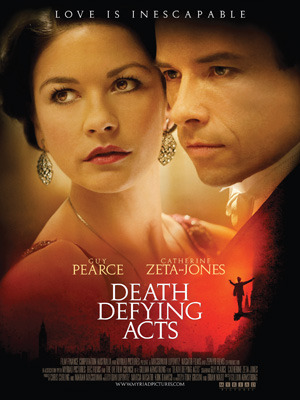 I had recently watched Death Defying Acts and thought that Guy Pearce was too tall too, and too eloquent, so I started to wonder just how Hollywood has treated Houdini. After tracking down a few bio-pics and “guest shots,” I noticed a few things in common and a few things that often seem to be missing–mainly Houdini’s interaction with magic community. He worked to organize magicians and also habitually seemed to piss them off. These are things overlooked and would probably require a series rather than a movie. Even if he is my 20th favorite magician, I’d watch a Mr. Slefridge-style series. And might I suggest some height appropriate actors? Daniel Radcliffe or Frankie Muniz are both 5’5″, but my pick would be a hair-dyed Seth Green (5’3″).
I had recently watched Death Defying Acts and thought that Guy Pearce was too tall too, and too eloquent, so I started to wonder just how Hollywood has treated Houdini. After tracking down a few bio-pics and “guest shots,” I noticed a few things in common and a few things that often seem to be missing–mainly Houdini’s interaction with magic community. He worked to organize magicians and also habitually seemed to piss them off. These are things overlooked and would probably require a series rather than a movie. Even if he is my 20th favorite magician, I’d watch a Mr. Slefridge-style series. And might I suggest some height appropriate actors? Daniel Radcliffe or Frankie Muniz are both 5’5″, but my pick would be a hair-dyed Seth Green (5’3″).
(While looking up information for this post, I find that Wild About Harry reports that the History channel has green-lit a two night series starring Adrien Brody, 6’1″.)
* I’m cribbing all my height information from IMDB.
What I’ve Seen:
Houdini (1953)
Tony Curtis – 5’9″
 What it’s got: Screwball romantic comedy, Houdini as the Wild Man and sawing Bess in half on their wedding night, Houdini working at a safe factory, lots of random magic, Bess threatening to leave over his relationship with magic, use of lockpick with toes, mysterious absent mentor Von Schweger and Otto the assistant, mention of Missouri (the Show Me state), a Halloween curse, not very dramatic debunking of a seance.
What it’s got: Screwball romantic comedy, Houdini as the Wild Man and sawing Bess in half on their wedding night, Houdini working at a safe factory, lots of random magic, Bess threatening to leave over his relationship with magic, use of lockpick with toes, mysterious absent mentor Von Schweger and Otto the assistant, mention of Missouri (the Show Me state), a Halloween curse, not very dramatic debunking of a seance.What it’s missing: Theo, Houdini interacting with other magicians, Houdini being punched in the gut.
The Great Houdini (1976)
Paul Michael Glaser – 5’11″
What it’s got: Houdini with a New York accent and struggling to become famous (suggested alternative job: working in a tie factory), Houdini and Bess working on their mind-reading act in bed, Bess leaving over Houdini’s relationship with his mother, the religious inclinations of Harry (Jewish) and Bess (Catholic), mention of Missouri, dramatic debunking of a seance, Halloween spookiness, Vivian Vance stealing every scene.
What it’s missing: Theo, Houdini interacting with other magicians, the love interest being called a shiksa.
Voyagers! “Agents of Satan” (1982)
Michael Durrell – shorter than everyone else except the kid
What it’s got: Escape via time travel! Dramatic debunking of “mentalist.”
What it’s missing: N/A – Houdini is a secondary character in a one hour TV drama.
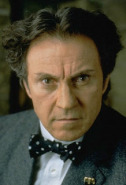 FairyTale: A True Story (1997)
FairyTale: A True Story (1997)
Harvey Keitel – 5’7″
What it’s got: The best Houdini hair, nice depictions of magic including Houdini post-water chamber escape waiting behind the curtain to build suspense.
What it’s missing: N/A – Houdini is a secondary character and is fairly compromising on the subject of fairies. He advises the young Miss Wright to never reveal her secrets.
Death Defying Acts (2007)
Guy Pearce – 5’10″
What it’s got: A buff, fit, perpetually injured, haunted Houdindi at the height of his career, a put-upon manager, a story from a medium’s perspective, a little girl who reads comics, an incredibly lush movie that covers a very small period of time.
What it’s missing: Bess, the needle trick, mention of Missouri.
Notable, but I Haven’t Seen:
Jeffrey DeMunn (5’9″) played Houdini twice in 1981′s Ragtime and as adult Houdini in Walt Disney’s Wonderful World of Color‘s “Young Harry Houdini” (1987).
Houdini (1998) (TV) Played by


Several Cinematic Houdinis
Earlier this week, a fellow Hugh Jackman fan linked to the following: Houdini Musical, Starring Hugh Jackman, May Have Chicago Premiere Prior to Broadway. My first thought was, “Dude, isn’t he a little tall to be Houdini?”
According to IMDB*, Harry Houdini was 5’6″. Wikipedia quotes 5’5″ and notes that his shortness was often remarked upon. Hugh Jackman is 6’2″. I’m guessing the milk can escape isn’t going to be in the musical. (Of course, this wouldn’t be the first time Jackman’s been called upon to “play short.” According to the Marvel Wiki, Wolverine is 5’3″.)
 I had recently watched Death Defying Acts and thought that Guy Pearce was too tall too, and too eloquent, so I started to wonder just how Hollywood has treated Houdini. After tracking down a few bio-pics and “guest shots,” I noticed a few things in common and a few things that often seem to be missing–mainly Houdini’s interaction with magic community. He worked to organize magicians and also habitually seemed to piss them off. These are things overlooked and would probably require a series rather than a movie. Even if he is my 20th favorite magician, I’d watch a Mr. Slefridge-style series. And might I suggest some height appropriate actors? Daniel Radcliffe or Frankie Muniz are both 5’5″, but my pick would be a hair-dyed Seth Green (5’3″).
I had recently watched Death Defying Acts and thought that Guy Pearce was too tall too, and too eloquent, so I started to wonder just how Hollywood has treated Houdini. After tracking down a few bio-pics and “guest shots,” I noticed a few things in common and a few things that often seem to be missing–mainly Houdini’s interaction with magic community. He worked to organize magicians and also habitually seemed to piss them off. These are things overlooked and would probably require a series rather than a movie. Even if he is my 20th favorite magician, I’d watch a Mr. Slefridge-style series. And might I suggest some height appropriate actors? Daniel Radcliffe or Frankie Muniz are both 5’5″, but my pick would be a hair-dyed Seth Green (5’3″).
(While looking up information for this post, I find that Wild About Harry reports that the History channel has green-lit a two night series starring Adrien Brody, 6’1″.)
* I’m cribbing all my height information from IMDB.
What I’ve Seen:
Houdini (1953)
Tony Curtis – 5’9″
 What it’s got: Screwball romantic comedy, Houdini as the Wild Man and sawing Bess in half on their wedding night, Houdini working at a safe factory, lots of random magic, Bess threatening to leave over his relationship with magic, use of lockpick with toes, mysterious absent mentor Von Schweger and Otto the assistant, mention of Missouri (the Show Me state), a Halloween curse, not very dramatic debunking of a seance.
What it’s got: Screwball romantic comedy, Houdini as the Wild Man and sawing Bess in half on their wedding night, Houdini working at a safe factory, lots of random magic, Bess threatening to leave over his relationship with magic, use of lockpick with toes, mysterious absent mentor Von Schweger and Otto the assistant, mention of Missouri (the Show Me state), a Halloween curse, not very dramatic debunking of a seance.What it’s missing: Theo, Houdini interacting with other magicians, Houdini being punched in the gut.
The Great Houdini (1976)
Paul Michael Glaser – 5’11″
What it’s got: Houdini with a New York accent and struggling to become famous (suggested alternative job: working in a tie factory), Houdini and Bess working on their mind-reading act in bed, Bess leaving over Houdini’s relationship with his mother, the religious inclinations of Harry (Jewish) and Bess (Catholic), mention of Missouri, dramatic debunking of a seance, Halloween spookiness, Vivian Vance stealing every scene.
What it’s missing: Theo, Houdini interacting with other magicians, the love interest being called a shiksa.
Voyagers! “Agents of Satan” (1982)
Michael Durrell – shorter than everyone else except the kid
What it’s got: Escape via time travel! Dramatic debunking of “mentalist.”
What it’s missing: N/A – Houdini is a secondary character in a one hour TV drama.
 FairyTale: A True Story (1997)
FairyTale: A True Story (1997)
Harvey Keitel – 5’7″
What it’s got: The best Houdini hair, nice depictions of magic including Houdini post-water chamber escape waiting behind the curtain to build suspense.
What it’s missing: N/A – Houdini is a secondary character and is fairly compromising on the subject of fairies. He advises the young Miss Wright to never reveal her secrets.
Death Defying Acts (2007)
Guy Pearce – 5’10″
What it’s got: A buff, fit, perpetually injured, haunted Houdindi at the height of his career, a put-upon manager, a story from a medium’s perspective, a little girl who reads comics, an incredibly lush movie that covers a very small period of time.
What it’s missing: Bess, the needle trick, mention of Missouri.
Notable, but I Haven’t Seen:
Jeffrey DeMunn (5’9″) played Houdini twice in 1981′s Ragtime and as adult Houdini in Walt Disney’s Wonderful World of Color‘s “Young Harry Houdini” (1987).
Houdini (1998) (TV) Played by


August 30, 2013
Adventures of the Writerly Writer ~ The Elusive 50K
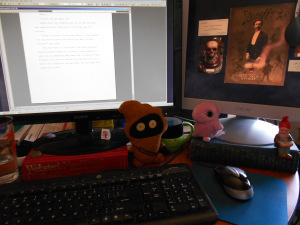
My current work environment.
Time for a rewrite/edit. It’s been a month.
I realized that I’d gone off the rails with my plot and needed Eric to help me get focused again. He read, concurred that I’d gotten muddled.
So, here I am again. I’m “starting over” at the beginning. Some of it will be retyped, some of it will be rewritten entirely. I’ll hit 50K one of these days, by golly; it’s just not going to be in the next couple of weeks. For the moment, my nebulous goal is to get as much done as possible.
 Hosted by Michelle @ Stories Inside
Hosted by Michelle @ Stories Inside


Adventures of the Writerly Writer ~ The Illusive 50K

My current work environment.
Time for a rewrite/edit. It’s been a month.
I realized that I’d gone off the rails with my plot and needed Eric to help me get focused again. He read, concurred that I’d gotten muddled.
So, here I am again. I’m “starting over” at the beginning. Some of it will be retyped, some of it will be rewritten entirely. I’ll hit 50K one of these days, by golly; it’s just not going to be in the next couple of weeks. For the moment, my nebulous goal is to get as much done as possible.
 Hosted by Michelle @ Stories Inside
Hosted by Michelle @ Stories Inside


August 28, 2013
R.I.P. VIII & Gothic September
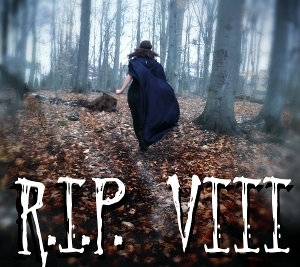
Hosted by Carl @ Stainless Steel Droppings
September 1st is right around the corner. It is time to begin.
Mystery.
Suspense.
Thriller.
Dark Fantasy.
Gothic.
Horror.
Supernatural.
Or anything sufficiently moody that shares a kinship with the above. That is what embodies the stories, written and visual, that we celebrate with the R.eaders I.mbibing P.eril event.
As time has wound on I’ve honed this event down to two simple rules:
1. Have fun reading (and watching).
2. Share that fun with others.
As I do each and every year, there are multiple levels of participation (Perils) that allow you to be a part of R.eaders I.mbibing P.eril without adding the burden of another commitment to your already busy lives. There is even a one book only option for those who feel that this sort of reading is not their cup of tea (or who have many other commitments) but want to participate all the same.
R.I.P. was one of the most fun on-line events I took part in last year. The above genres are some of my favorites, and I’m always on the lookout for more reviewers and bloggers who cover the dark side of speculative fiction.
Peril the First: My current TBR pile is below. I shouldn’t have any trouble finishing four books in two months.



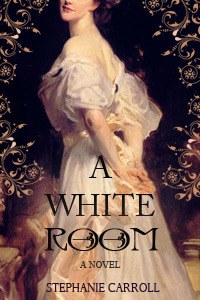
Peril of the Short Story: Additionally, I working my way through a couple anthologies:


And lastly, Peril on the Screen. I already have a thing or two in mind to watch. Now, all I need is September!
I’m also going to try to participate in The True Book Addict’s Gothic September. I have two bits of Gothic literature on my list right now. Who knows? Maybe I’ll even finish The Woman in White!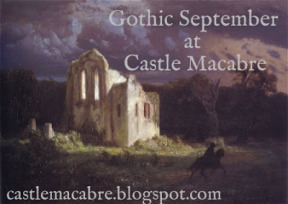


August 27, 2013
Review ~ The Glorious Deception
In a biography woven from equal parts enchantment and mystery, master illusion designer and today’s foremost magic historian, Jim Steinmeyer, unveils the astonishing secrets behind the enigmatic performer Chung Ling Soo, the “Marvelous Chinese Conjurer” — a magician whose life of intrigue and daring remains unparalleled to this day. He learned his art during a revolutionary era in show business, just as minstrel, circus, and variety saloons were being stirred together and distilled into a heady new concoction: vaudeville. Soo’s infamous death in 1918 astonished the world: he was killed during a performance of “Defying the Bullets,” his popular act in which he caught marked bullets on a porcelain plate. After his death, the deceptions began to unravel. It was discovered that he was not Chinese, but rather a fifty-six-year-old American named William Ellsworth Robinson, a former magicians’ assistant, and the husband of Olive Robinson. But even William Robinson was not who he appeared to be, and for the first time, Jim Steinmeyer has uncovered the truth behind Robinson and the magic world’s most glorious deception. (via Goodreads)
Interwoven with the tale of William Robinson and his transformation into Chung Ling Soo is the history of a very dangerous trick: the bullet catch. Honestly, before this book, I wasn’t sure if any magician had ever died doing a bullet catch illusion. There are layers and layers of stories around magic and magicians. Some of these stories are…not true. This is obviously the case with Robinson. He spun the persona of Chung Ling Soo, the Chinese conjurer, around tricks that suited his incredible technical aptitude in order to hide his awkward stage presence. As long as he was able to lose himself in a role, he was a very fine magician. His secret, like most secrets in magic, was half-kept. Professional magicians knew what was going on (his biggest rival was the a real Chinese conjurer, Ching Ling Foo), but the general public did not.
Similar layers of truth and falsehood surround dangerous magic tricks*. Many of Houdini’s death-defying acts were very well planned and prepared, only seeming to be potentially fatal. When a magician claims that something is dangerous, that it may be fatal, I only half believe. But the bullet catch, historically, has been both. It involves not entirely safe modifications to firearms and a blurring of reality that has led audience members to disregarding the whole trick aspect of the trick.
I debated buying this book for a while. I had already read Steinmeyer’s Hiding the Elephant and The Last Greatest Magician in the World, both of which cover the same era in stage magic. I didn’t think I could justify a biography of Chung Ling Soo as more research material. My correspondence with Chicago magician Neil Tobin helped make the decision. He suggested it since Robinson (aka Soo) was once almost arrested for being involved with a sham seance during the Chicago World’s Fair. While Robinson did write a book on spiritualism, his involvement isn’t delved into too much in The Glorious Deception. Ultimately, this book wasn’t a hugely useful resource aside from providing more information about the time period.
I was also worried that the stories, and Jim Steinmeyer’s writing, might get a little stale. The major magicians of the late 1800s and early 1900s knew each other, were friends and rivals (often both). Robinson, before he became Chung Ling Soo, worked for the Herrmanns and Harry Keller as an assistant and stage manager. Howard Thurston (the subject ofThe Last Greatest Magician) was associated with Keller and tried to impress Leon Herrmann, a story in which Robinson plays a role. Tales overlap. I was worried that I might get tired of reading them. But I didn’t. All the little stories snap together; little clusters of puzzle pieces fit together into a richer picture. Currently, I have a lot of enthusiasm for magic history.
Steinmeyer is a talented writer. I’ve said it before, he has obvious love for the subject matter and that comes through in his work. Looks like I’m going to be asking for the rest of his books for Christmas.
* See also, Penn & Teller’s nail gun trick.
Genre: Non-fiction.
Why did I choose to read this book? I really like Jim Steinmeyer’s books; it was also suggested to me by a magician as good research material.
Did I finish this book? (If not, why?) Absolutely.
Craft Lessons: Man, I really do envy Steinmeyer’s way with words. I read. Why don’t I use words better?!
Format: Paperback.
Procurement: Amazon.com
Bookmark: Business card from SteamCrow.com

Hosted by Joy of Joy’s Book Blog


The Glorious Deception
In a biography woven from equal parts enchantment and mystery, master illusion designer and today’s foremost magic historian, Jim Steinmeyer, unveils the astonishing secrets behind the enigmatic performer Chung Ling Soo, the “Marvelous Chinese Conjurer” — a magician whose life of intrigue and daring remains unparalleled to this day. He learned his art during a revolutionary era in show business, just as minstrel, circus, and variety saloons were being stirred together and distilled into a heady new concoction: vaudeville. Soo’s infamous death in 1918 astonished the world: he was killed during a performance of “Defying the Bullets,” his popular act in which he caught marked bullets on a porcelain plate. After his death, the deceptions began to unravel. It was discovered that he was not Chinese, but rather a fifty-six-year-old American named William Ellsworth Robinson, a former magicians’ assistant, and the husband of Olive Robinson. But even William Robinson was not who he appeared to be, and for the first time, Jim Steinmeyer has uncovered the truth behind Robinson and the magic world’s most glorious deception. (via Goodreads)
Interwoven with the tale of William Robinson and his transformation to Chung Ling Soo is the history of a very dangerous trick: the bullet catch. Honestly, before this book, I wasn’t sure if any magician had ever died doing a bullet catch illusion. There are layers and layers of stories around magic and magicians. Some of these stories are…not true. This is obviously the case with Robinson. He spun the persona of Chung Ling Soo, the Chinese conjurer, around tricks that suited his incredible technical aptitude in order to hide his awkward stage presence. As long as he was able to lose himself in a role, he was a very fine magician. His secret, like most secrets in magic, was half-kept. Professional magicians knew what was going on (his biggest rival was the a real Chinese conjurer, Ching Ling Foo), but the general public did not.
Similar layers of truth and falsehood surround dangerous magic tricks*. Many of Houdini’s death-defying acts were very well planned and prepared, only seeming to be potentially fatal. When a magician claims that something is dangerous, that is it fatal, I only half believe. But the bullet catch, historically, has been dangerous and fatal. It involves not entirely safe modifications to firearms and a blurring of reality that has led audience members to disregarding the whole trick aspect of the trick.
I debated buying this book for a while. I had already read Steinmeyer’s Hiding the Elephant and The Last Greatest Magician in the World, both of which cover the same era in stage magic. I didn’t think I could justify a biography of Chung Ling Soo as more research material. My correspondence with Chicago magician Neil Tobin helped make the decision. He suggested it since Robinson (aka Soo) was once almost arrested for being involved with a sham seance during the Chicago World’s Fair. While Robinson did write a book on spiritualism, his involvement isn’t delved into too much in The Glorious Deception. Ultimately, this book wasn’t a hugely useful resource aside from providing more information about the time period.
I was also worried that the stories, and Jim Steinmeyer’s writing, might get a little stale. The major magicians of the late 1800s and early 1900s knew each other, were friends and rivals (often both). Robinson, before he became Chung Ling Soo, worked for the Herrmanns and Harry Keller as an assistant and stage manager. Howard Thurston (the subject ofThe Last Greatest Magician) was associated with Keller and tried to impress Leon Herrmann, a story in which Robinson plays a role. Tales overlap. I was worried that I might get tired of reading them. But I didn’t. All the little stories snap together; little clusters of puzzle pieces fit together into a richer picture. Currently, I have a lot of enthusiasm for magic history.
Steinmeyer is a talented writer. I’ve said it before, he has obvious love for the subject matter and that comes through in his work. Looks like I’m going to be asking for the rest of his books for Christmas.
* See also, Penn & Teller’s nail gun trick.
Genre: Non-fiction.
Why did I choose to read this book? I really like Jim Steinmeyer’s books; it was also suggested to me by a magician as good research material.
Did I finish this book? (If not, why?) Absolutely.
Craft Lessons: Man, I really do envy Steinmeyer’s way with words sometimes. I read. Why don’t I use words better?!
Format: Paperback.
Procurement: Amazon.com
Bookmark: Business card from SteamCrow.com

Hosted by Joy of Joy’s Book Blog


August 25, 2013
Sit Down and Write 4
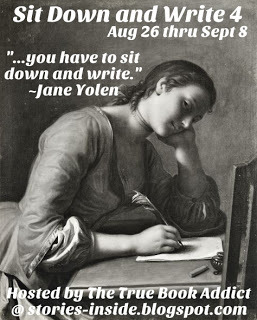 Hosted by Michelle, The True Book Addict @ Stories Inside
Hosted by Michelle, The True Book Addict @ Stories Inside
The Sit Down and Write write-a-thons are for any writing you need to get done. If you’re working on a novel, a novella, or even short stories. If you have a ton of reviews to write coming off of any read-a-thons you might have just finished with, then this is for you too! Official dates and times: Monday, August 26 at 12:01am CST through Sunday, September 8 at 11:59pm CST (adjust times according to your time zone).
I had a scheme: Edit Monday, write 1000 words Tues-Fri, research Saturday, whatever on Sunday. According to that scheme my manuscript should be at 38,000 words right now. It’s not. It’s at 35,225. Why am I behind? Simply because I haven’t been sitting down and writing.
My goal is to get caught up (according previous goals) by the end of Sit Down and Write*: Reach 46,000 by Sept. 8th. Actually, I’m going to stretch it out a little to 47,000 by Tuesday Sept. 10th. I’m heading to Omaha on the 11th and it would be nice to be caught up by then. I’m also adding a stretch goal of 50K by the time I go to Omaha.
Can I keep up a NaNoWriMo pace for four days a week? You’d think, but I’m heading into the middle of this book. Middles are hard for me.
Why don’t I write every day? I’ve been doing this for 15 years. I know myself. It doesn’t work for me.
Other complicating factors:
I’m going to have work VOTS work to do. Draft is Monday night and league starts on the third, which means I’m going to have teams and a schedule to post, among other things.
I should also get one ahead on book reviews before heading to Omaha. This is a minor consideration.
Minecraft. Need to limit my Minecraft time. Larger consideration. That game is a total time suck.
* This is my first one, btw. I haven’t been very social in my writing because somewhere along the way, I got really tired of talking about writing!



